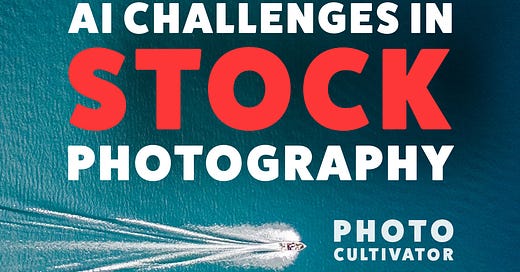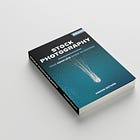The stock photography industry faces several challenges, including the rise of generative AI, the impersonal nature of stock photos, and the increasing costs of R&D and product development for AI tools.
Generative AI's Dual Role: Challenge and Opportunity
Generative AI, with its ability to create images on demand, presents a massive challenge to the stock photo industry.
While these AI-generated images may lack the emotional depth found in human-created photos, their capacity to significantly reduce costs, such as those associated with traditional stock photography—expensive photo shoots, model hires, and exotic location rentals—opens up opportunities for the industry.
On one hand, generative AI challenges the industry by raising questions about the emotional depth and storytelling capabilities inherent in human-created visuals.
On the other hand, it sparks innovation by paving the way for more cost-effective and accessible high-quality visuals.
Real-Life Example
Let’s take the example of visual designers.
In their eyes, generative AI comes as a game-changer in the stock photography landscape.
Here’s how:
The traditional stock model faces limitations, especially for professionals seeking visual consistency yet variation in projects.
Designers often need a series of images that not only maintain a consistent style and color palette but also evolve in subject matter to tell a compelling story across presentations or videos.
So, finding a single vector or image suitable for a specific slide or project section while lacking a series for cohesive storytelling is a big challenge.
The traditional approach involves sifting through multiple portfolios or manually creating additional images—a time-consuming task, particularly under tight deadlines.
For designers, the future is where an AI engine can be prompted to generate a cohesive series of images, tailored to the required subject matter, style, and color palette.
Despite existing challenges, some AI engines may be user-friendly but inconsistent, while others offer more control but prove complex.
Industry leaders, including Adobe, are actively addressing these issues. Noteworthy partnerships, such as Getty with Bria and Shutterstock with OpenAI, signal a shift towards a more dynamic and efficient stock model.
This example vividly illustrates the transformative potential of generative AI in tackling real-world challenges faced by professionals in the visual design industry.
Adapting to the Rise of Generative AI: Strategies for Stock Photography Companies
To keep up with the rise of generative AI, here’s what stock photography companies can do:
They can strategically integrate AI-generated images into their collections.
This infusion could inject billions of images virtually overnight at a fraction of the traditional costs.
Leaders in the industry, such as Shutterstock, have already initiated experiments with generative AI, utilizing it to fill content gaps challenging for human creators.
Notably, Adobe Stock stands out as the high-volume stock photography platform currently accepting AI-generated images.
Ethical and Legal Concerns
Using AI-generated images brings up issues like ownership and authenticity.
Companies need new rules.
Shutterstock or Adobe, for example, share earnings with contributors whose work helps train the AI.
Generic Photos
Another challenge is the impersonal and generic nature of stock photos.
Most stock photos don't attract customers or prompt engagement because they are often impersonal and generic.
To counter this, companies can invest in quality imagery and create a strategy that prioritizes the use of unique visuals and custom content.
R&D Costs
The increasing costs of R&D and product development for generative AI tools is another challenge.
However, generative AI has the potential to deliver productivity with a value ranging from 10 to 15 % of overall R&D costs. It can also significantly reduce the costs associated with traditional R&D processes by automating parts of these processes.
To deal with the challenge of AI image manipulation, techniques like watermarking and AI techniques like PhotoGuard can be used.
PhotoGuard uses perturbations — minuscule alterations in pixel values invisible to the human eye — to protect images from unauthorized edits by AI models.
In a Nutshell
The rise of generative AI is disrupting the entire industry.
The only way for stock photo companies to roll with the changes and keep thriving is to blend AI with traditional methods, set fair rules, improve image quality, and use AI smartly.
-Hakan.




